In the fast-paced world of social media, the presence of bots has become increasingly prevalent and sophisticated. Bots, short for “robots,” are automated accounts or pieces of software designed to perform various tasks on social media platforms. While some bots serve legitimate purposes, others are malicious and engage in activities that can harm individuals and organizations.
To effectively safeguard your platform and user experience, it’s crucial to understand and evaluate these bots.
In this comprehensive guide, we’ll explore the twelve criteria for evaluating social media bots, equipping you with the knowledge needed to identify, operate, and mitigate their impact.
What Is a Bot?
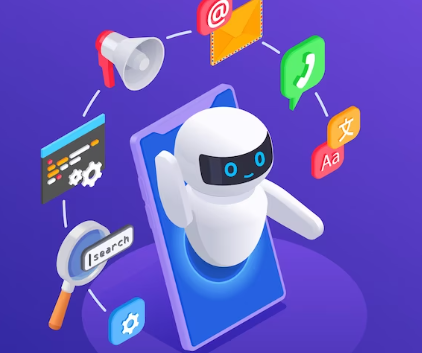
Source: FreePik by macrovector
At its core, a bot is a software application designed to automate tasks on the internet. In the context of social media, bots are programmed to mimic human interactions, such as posting content, liking, sharing, and even engaging in conversations with users.
Understanding Bot Detection
Bot detection refers to the process of identifying and distinguishing between automated bots and human users on social media platforms. Effective bot detection methods are essential for maintaining the integrity of these platforms.
The Importance of Assessing Social Media Bots

Source: FreePik by storyset
Social media platforms are integral to communication, information sharing, and marketing strategies. Bots can significantly impact these platforms, whether for good or ill. By evaluating social media bots based on specific criteria, you can ensure a safer and more genuine online environment.
Now, let’s delve into the twelve essential criteria for evaluating social media bots. These criteria encompass various aspects, from the purpose and behavior of bots to the technology behind their operations.
1. Purpose

Source: FreePik by by jcomp
Understanding the intended use of a bot is fundamental. Some bots are developed for legitimate purposes, such as customer service or content sharing, while others are designed to spread misinformation, engage in spamming, or manipulate public opinion.
Content-sharing bots are employed to disseminate information, automate social media posts, or curate content, streamlining the sharing process for users and organizations.
2. Behavior
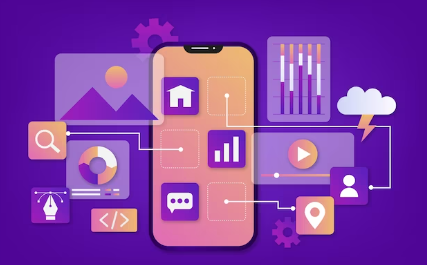
Spurce: FreePik
Activity
Evaluate the volume and frequency of a bot’s activity. Suspicious bots may engage in excessive posting or liking. Bots may engage in excessive posting, meaning they rapidly generate and publish a large number of posts, comments, or messages in a short span of time. Such a high volume of activity is unusual for human users and can be indicative of automated behavior.
Network
Analyze the bot’s network. Bots may operate individually or as part of a network of interconnected accounts. When scrutinizing an individual bot, it is imperative to ascertain whether it stands alone or is part of a broader network.
An isolated bot typically operates independently, carrying out actions without any apparent affiliation with other accounts. Such bots may be responsible for tasks like spamming, disseminating propaganda, or artificially inflating engagement metrics on social media platforms.
3. Data Collection
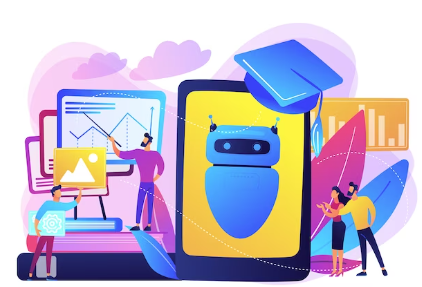
Source: FreePik by vectorjuice
Consider what data the bot collects from users. Malicious bots may attempt to gather personal information. This could encompass a range of activities, such as scraping social media profiles, harvesting email addresses, or even attempting to gain access to login credentials. These activities pose a significant threat to user privacy and can lead to various forms of cyberattacks and identity theft.
On the contrary, legitimate bots are typically designed to enhance user experiences and provide valuable services. They may collect data with user consent and for specific purposes aimed at improving the functionality and usability of their services. This data can include user preferences, browsing habits, or interaction history, all of which are employed to tailor content or recommendations, optimize user interfaces, and provide more personalized experiences.
4. Technology
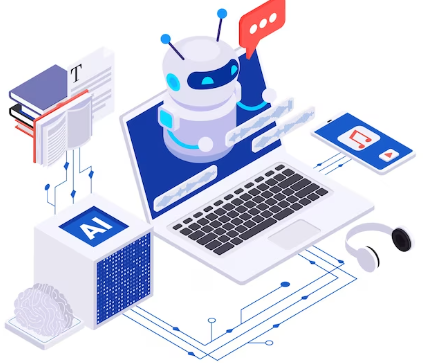
Source: FreePik by macrovector
Platform
Determine the social media platform on which the bot operates. Different platforms may have varying policies and regulations regarding bot usage. Therefore, it is crucial to pinpoint the exact platform in question, as this information will be instrumental in ensuring compliance with the platform’s unique policies and regulations related to bot usage.
Understanding and adhering to these specific guidelines is imperative for maintaining a bot’s presence and functionality while avoiding any potential issues or violations on the chosen social media platform.
Software
Assess the software or code behind the bot. Recent advancements in bot technology have made it challenging to detect automated accounts. Staying ahead in the ongoing battle against deceptive bots requires constant vigilance and the ability to adapt to the evolving strategies employed by automated accounts.
Internet
Consider the bot’s connection to the internet. Some bots may use proxies or VPNs to appear as if they are operating from different locations. In essence, the deployment of proxies and VPNs in a bot’s internet connectivity strategy not only conceals their true identity but also empowers them to operate with increased versatility and agility, rendering them more formidable and elusive in the digital landscape.
5. Malicious Intent

Source: FreePik by pch.vector
Identify any patterns of behavior that suggest malicious intent. This may include spreading false information, impersonating real users, or engaging in cyberattacks. One prominent pattern that raises concerns about malicious intent is the deliberate dissemination of false or misleading information.
Malicious actors may engage in the spread of fake news, rumors, or fabricated content to manipulate public opinion, incite fear or confusion, or further their own agendas. Detecting such behavior involves tracking the sources of information, cross-referencing claims with reliable sources, and analyzing the consistency and credibility of the information being shared.
6. Term of Operation
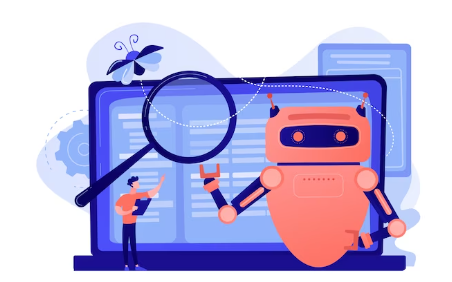
Source: FreePik by vectorjuice
Determine how long the bot has been active. Bots that have been operating for an extended period may be more challenging to detect. The age of a bot can be a reliable indicator of its sophistication and potential threat level.
Consequently, it becomes imperative for those responsible for combating malicious bots to continuously update their detection techniques and strategies to effectively contend with these long-standing digital adversaries.
7. Communication

Source: FreePik by pch.vector
Message
Analyze the messages or comments made by the bot. One critical aspect of this analysis involves assessing whether the bot engages in meaningful conversations or predominantly disseminates spammy or irrelevant content. This distinction is essential because it provides valuable insights into the bot’s underlying objectives and effectiveness in achieving them.
Share
Examine what the bot shares. A key aspect of this examination involves determining whether the bot consistently promotes a specific agenda or website. This analysis is critical as it sheds light on the bot’s primary objectives and its role within the digital ecosystem.
8. Machine Learning and Artificial Intelligence

Source: FreePik
Bots that incorporate machine learning and AI technologies can adapt and evolve over time, making them more challenging to detect. Stay updated on recent advancements in this field. Explore the methods used by the bot. Understanding the underlying methods used by a bot is crucial for assessing its capabilities, limitations, and potential contributions.
Whether it operates on elementary algorithms or harnesses the power of AI, comprehending the bot’s approach is essential for gauging its suitability for specific tasks and objectives.
9. Research and Recent Examples
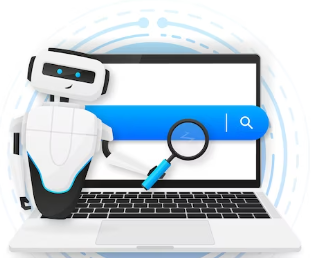
Source: FreePik by starvector06
Research
Stay informed about the latest research and developments in the field of social bots. Researchers are continually working to improve bot detection methods. Staying informed about these evolving trends and research endeavors is essential for anyone interested in understanding and combating the intricate and ever-changing landscape of social bots.
By actively following the latest developments, individuals can better equip themselves with the knowledge and tools needed to effectively identify and address the challenges posed by these automated entities in the digital sphere.
Recent Examples
Learn from recent examples of bot activity on social media platforms. Analyze how these bots operate and adapt your strategies accordingly. Incorporating these insights into your approach can involve a range of actions, from refining content moderation processes to employing AI-based tools designed to detect and flag suspicious activities.
Additionally, fostering a vigilant online community that reports and identifies potential bot accounts can be an instrumental part of your strategy.
10. Natural Language Processing (NLP)

Source: FreePik by val-suprunovich
NLP refers to the ability of a bot to understand and generate human-like language. Bots with advanced NLP capabilities can engage in more convincing conversations. Advanced NLP empowers bots to transcend mere automation and venture into the realm of genuine, meaningful dialogue.
It equips them with the prowess to craft responses that align with the intricacies of human language, ultimately enhancing the overall user experience and solidifying their position as indispensable tools in various domains, from customer service to virtual assistants and beyond.
11. Influence

Source: Freepik by rudzhan
Consider the impact the bot has on users. A substantial user base can signify the bot’s reach and the extent to which it engages with individuals. The larger the following, the greater the potential for its messages and content to disseminate widely across various online platforms. Such proliferation can amplify the bot’s ability to shape narratives, as its messages are exposed to a larger audience.
12. Development Model
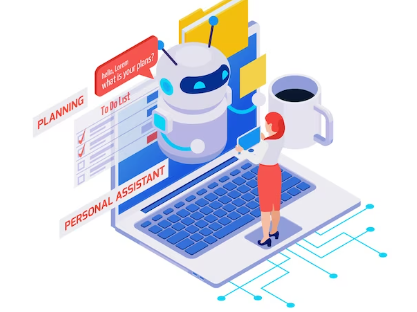
Source: FreePik by macrovector
Examine the development model behind the bot. Some bots are designed by individuals, while others are created by organizations or state actors. As these various entities continue to shape the bot ecosystem, it becomes essential to monitor and regulate the development and deployment of bots to ensure their alignment with societal values and norms.
Furthermore, understanding the diverse range of actors involved in bot creation allows us to navigate this evolving digital frontier with greater awareness and insight.
Best Social Media Generator
Conclusion

Source: Pexels by Ann H
In a digital landscape that is constantly evolving, the presence of social media bots is a challenge that requires ongoing vigilance and adaptation. By thoroughly evaluating bots based on the twelve criteria outlined in this guide, you can better protect your platform from hackers, malicious use, data breaches, and the erosion of user trust.
As technology continues to advance, staying informed and proactive in bot detection and mitigation is crucial to ensuring a safe and authentic online environment for all users in 2023 and beyond.
You are welcome to peruse our extensive collection of blogs, which offer a diversified range of topics and provide a substantial amount of helpful information on various relevant themes. Visit our blog and explore digital resources like social media bots to enhance your understanding and acquire profound insights into subjects that are of significance to you.
FAQS
What is the definition of a social media bot?
A social media bot, also known as a social bot or chatbot, is a software application that is programmed to perform repetitive tasks on social media platforms, such as posting tweets, liking posts, or following/unfollowing accounts, all without direct human intervention.
What are the basic criteria to evaluate a social media bot?
There are 12 criteria that can be used to evaluate a social media bot: use of bots, appearance, basic features, security, relevance, spam rate, automation, access to data, selectivity, combination of features, research report, and cookie policy.
How can we determine if a bot is being used?
The use of bots can usually be determined by observing repetitive and relatively wide actions that are carried out automatically and appear to relay one another. Additionally, the use of multiple accounts to perform similar actions simultaneously can be indicative of bot usage.
Why is the appearance of a social media bot important?
The appearance of a social media bot is important because it should mimic the behavior and characteristics of a real user, in order to avoid detection and maintain its effectiveness. If a bot looks suspicious or behaves in an unnatural way, it may be flagged or reported as a bot.
What are some basic features to look for in a social media bot?
Some basic features to look for in a social media bot include the ability to post tweets or other types of content, follow/unfollow users, like posts, and engage in conversations. These features are typically necessary for the bot to carry out its intended actions on social media platforms.
How can we ensure the security of a social media bot?
To ensure the security of a social media bot, it’s important to use reliable and trustworthy bot development tools. Additionally, the bot should be designed to comply with the platform’s security policies and should not engage in any malicious or harmful activities.
What is the relevance of a social media bot?
The relevance of a social media bot refers to how well it aligns with the goals and objectives of the user or organization using it. A relevant bot should be able to perform the desired actions and provide value in terms of increasing engagement, driving traffic, or achieving other specific goals.
How can we measure the spam rate of a social media bot?
The spam rate of a social media bot can be measured by analyzing the content it posts and the feedback it receives from other users. If the bot consistently posts irrelevant or low-quality content, or if it receives a high number of reports or blocks, it may be considered a spam bot.
What is the automation feature of a social media bot?
The automation feature of a social media bot refers to its ability to perform actions automatically, without requiring manual intervention. By automating tasks, a bot can save time and effort for its user and can carry out actions consistently and reliably.
What does access to data mean in the context of a social media bot?
Access to data in the context of a social media bot refers to its ability to gather and analyze data from various sources, such as user profiles, posts, or trends. This data can be used to inform the bot’s actions and to provide insights for the user or organization.
How does selectivity play a role in evaluating a social media bot?
Selectivity is an important criterion for evaluating a social media bot because it determines how well the bot can filter and target specific types of content or users. A bot that can selectively engage with relevant users or posts is generally more effective in achieving its intended goals.








